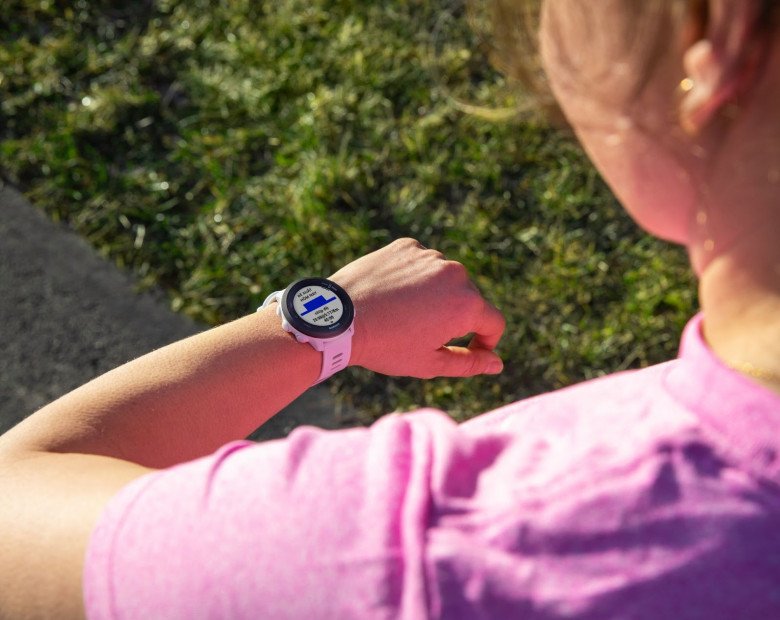So, how much running is enough to lose weight?

According to research, to lose 1kg, you need to burn 7,700 calories. Running for 30 minutes at a high intensity burns about 255 calories. So, to lose half a kilogram, you need to commit to running for an hour every day, six times a week. However, the number of calories burned also depends on individual body weight and running speed.
Therefore, there is no exact answer to how many minutes you should run each day to lose weight effectively. Since everyone has a different body type and metabolism, the time required to burn calories will vary. In reality, even if two people follow the same running routine and diet, their weight loss results may differ.

Running for 30 minutes at a high intensity burns about 255 calories.
Principles of Effective Running for Weight Loss
To lose weight through running, you should aim to run more frequently, at a faster pace, and on an inclined surface.
In essence, you want to challenge your body by making it work harder than it would on a flat surface. The goal is to burn more calories.
1. Start with 20-Minute Runs
If you’re new to running, begin by alternating between walking and running. Gradually increase your running duration until you can continuously run for 20 minutes. Having a consistent running routine and building up your endurance will help prevent you from giving up too quickly.
When you’re just starting, try walking briskly for 3-4 minutes, then running for 30 seconds, and alternating between the two for 20 minutes.
During this time, you’re building the necessary stamina to eventually run for a full 20 minutes.

When starting, alternate between walking briskly and running for 20 minutes.
2. Increase Your Speed
The number of calories you burn in a session depends on your weight and running speed. According to Harvard Health Publishing, a 155-pound person running at 6 mph burns approximately 248 calories. Increasing the intensity by running at a faster pace, such as 7.5 mph, for the same duration, will burn even more calories—around 310 for a 155-pound woman.
Running faster makes your body work harder, resulting in faster and deeper breathing, a faster heart rate, and ultimately, more calories burned.

Research shows that high-intensity running can burn up to 5 calories per minute through fat oxidation.
3. Run on an Incline
Running uphill or on an inclined surface requires more effort and energy than running on a flat surface. Similarly, running on a lateral incline forces your legs to push harder, resulting in increased energy expenditure.
To incorporate incline running into your routine, try running up stairs or hills. This can be done on a staircase in your home or at a stadium. Not only will this burn more calories, but it will also help strengthen your legs, improving your overall running performance.
Tips for Effective Running to Lose Weight
1. Avoid Overeating After Running
After a running session, you’re likely to feel hungry due to the calorie deficit created by your workout. However, overeating can undo the benefits of your workout and hinder your weight loss efforts. On the other hand, skipping meals or severely restricting your calorie intake can lead to health issues like low blood pressure and dizziness.
To effectively lose weight, it’s crucial to control your food intake after running. Aim to consume around 150 calories to replenish your energy without undoing your progress.

Consume about 150 calories after running to refuel your body.
2. Determine the Number of Calories You Need to Burn
Everyone’s body is different, and the level of exhaustion you feel after running may vary. Instead of relying on subjective factors like perspiration, use objective measurements to determine the number of calories you need to burn. Calculating and tracking your calorie burn can help you stay on course with your weight loss goals. You can use a calorie-tracking device or smartphone apps to monitor your progress.

Using apps or a smart watch can help you safely and effectively burn fat during your runs.
3. Vary Your Running Routines
It’s important to mix up your running routines. Different running exercises target different muscle groups and burn varying amounts of calories. By changing up your routines and incorporating a variety of running conditions, you can enhance the effectiveness of your weight loss journey.
4. Stay Hydrated During Your Runs
Running can lead to significant fluid loss through sweating and breathing. Therefore, it’s crucial to stay properly hydrated before, during, and after your runs. Stick to drinking plain water, as sugary or carbonated drinks can hinder your weight loss efforts. Remember to listen to your body and adjust your water intake accordingly.

Stay hydrated during your runs to support your body’s needs.



































